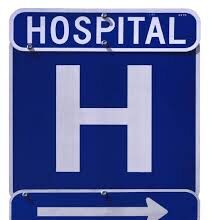Last week, we discussed new drug approvals that reflected a paradigm shift for cancer drug development and for treatment of people living with cancer. Finally, we are starting to see a matchup of specific diagnostics with targeted biotherapeutics to address (effectively, we hope) targeted treatments for smaller groups of cancer patients.
Last week, we discussed new drug approvals that reflected a paradigm shift for cancer drug development and for treatment of people living with cancer. Finally, we are starting to see a matchup of specific diagnostics with targeted biotherapeutics to address (effectively, we hope) targeted treatments for smaller groups of cancer patients.
Just recently, the American Society for Clinical Oncology (ASCO) urged the use of new biological knowledge to develop treatments faster, design more targeted clinical trials, and use information technology to integrate once-separate translational and clinical research. ASCO even says that targeted therapies can improve clinical trial responses from 8 to 30 percent. Also, just recently, the FDA gave itself a pat on the back as it highlighted its recent innovative drug approvals, with targeted cancer therapies included among those on the list.
What both of these events underscore is that we’re now finally seeing real co-development of drugs and companion diagnostics. This is a refreshing departure from the old system in which tests were developed after the drug was approved, often to rescue certain drugs that were facing rejection or had been pulled from the market.
We expect this trend to continue and will probably start to see new tests in two categories:
- Tests designed to include or to qualify patients. For example, if the specific drug target is present or activated, say, by a genetic alignment that creates the target (like Bcr-Abl fusion for leukemia), or mutations activate the target (like V600E in BRAF for melanoma), it will be sensitive to inhibitors.
- Tests designed to exclude or to disqualify patients. An example would be tests that determine the vicinity of the target pathway to determine if pre-existing mutations would enable the cancer to bypass drug activity (like KRAS mutations that circumvent EGFR inhibition).
While this may bring optimism to patients and investors alike, Ken Walz, my colleague at Popper and Co., has a warning:
“Don’t discount the economic impact of this new world of cancer therapies. Pharmaceutical companies will at first be hesitant to abandon their blockbuster strategy. Niche drugs would not be sustainable under their cost structure. If discovery and development costs stay the same, the price of niche drugs would have to be very, very high. But if ASCO’s goals come true, R&D costs could realistically come down. And a portfolio of niche drugs could work very well, indeed.”
Good food for thought, considering how many times that light at the end of the cancer therapy tunnel was just a reflection off more muck. What do you think? What does the future of cancer therapy look like? Or the future of pharmaceutical development and R&D investment, for that matter? Share your thoughts with us.
This post was originally published on the Popper and Co Blog. Shane Climie has more than 20 years of R&D and business development experience in the life sciences and pharmaceutical industry and is currently a principal at Popper and Co.







